
Enlisted Rank Insignia
WWII U.S.Army enlisted and NCO rank insignia was worn on the upper sleeve on both arms, centered halfway between the shoulder seam and the elbow. Below are illustrations and explanations of the various rank insigna.
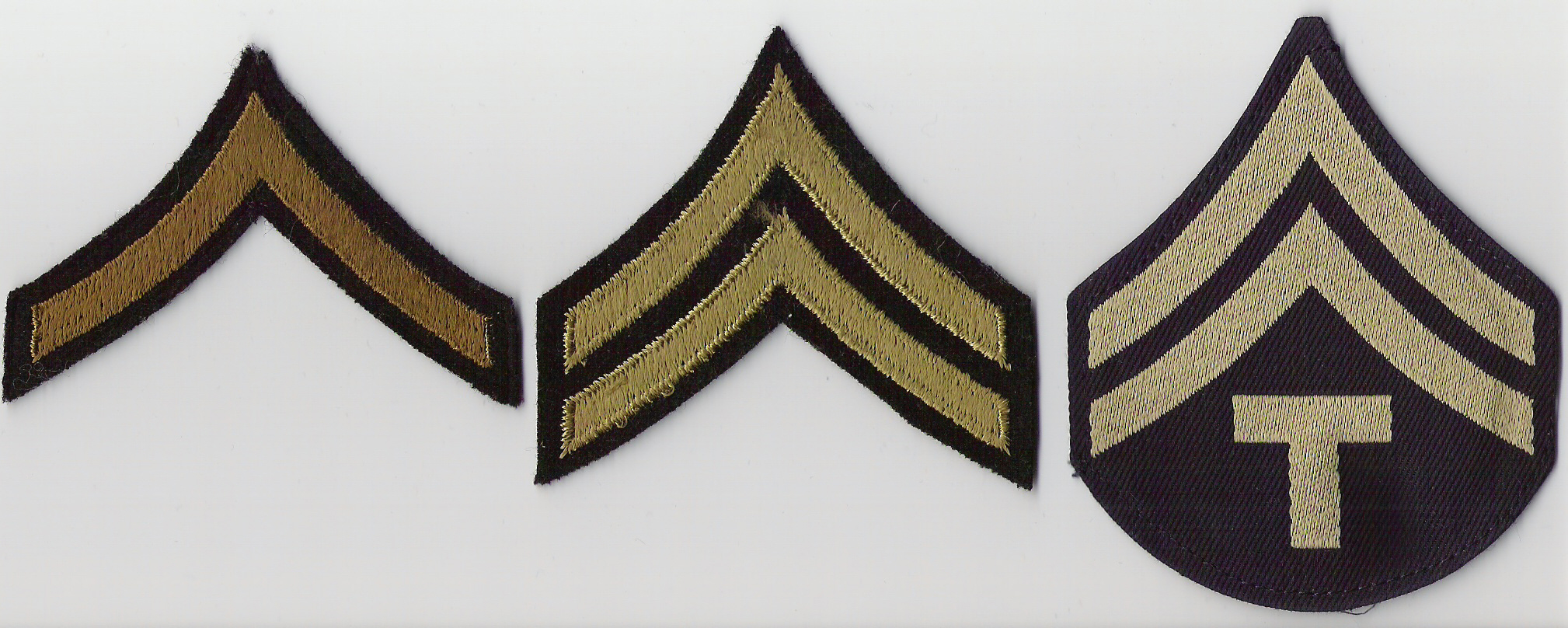
Left to right: Private First Class (Pfc.), Corporal (Cpl.), and Technician 5th Grade (T/5). Note: The Pfc and Cpl stripes are "Winter Dress" style, while the T/5 Stripes are the "Summer Combat" style. See explanations below.
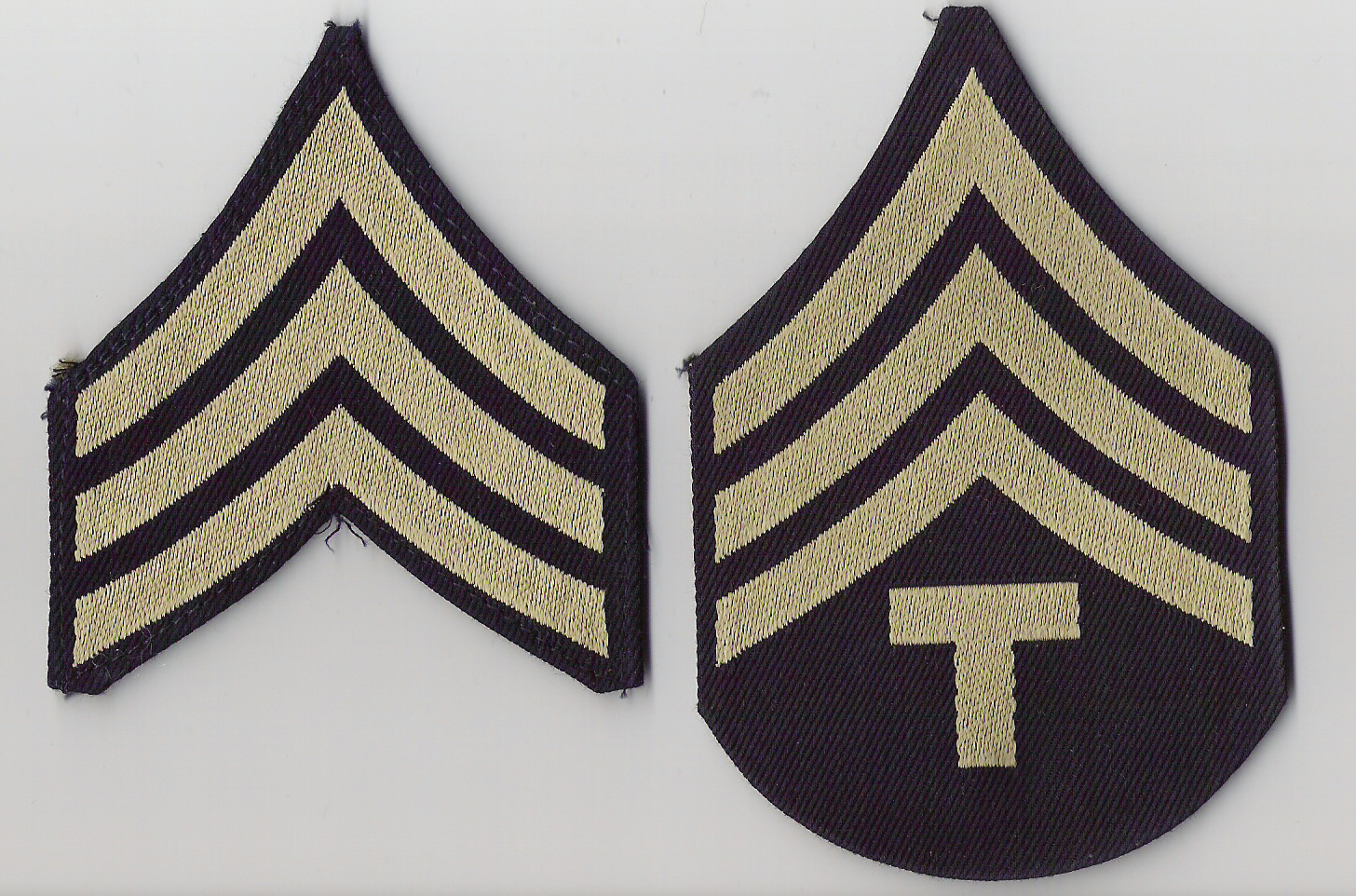
Left: Sergeant (Sgt.) stripes. Right: Technician 4th Grade (T/4).
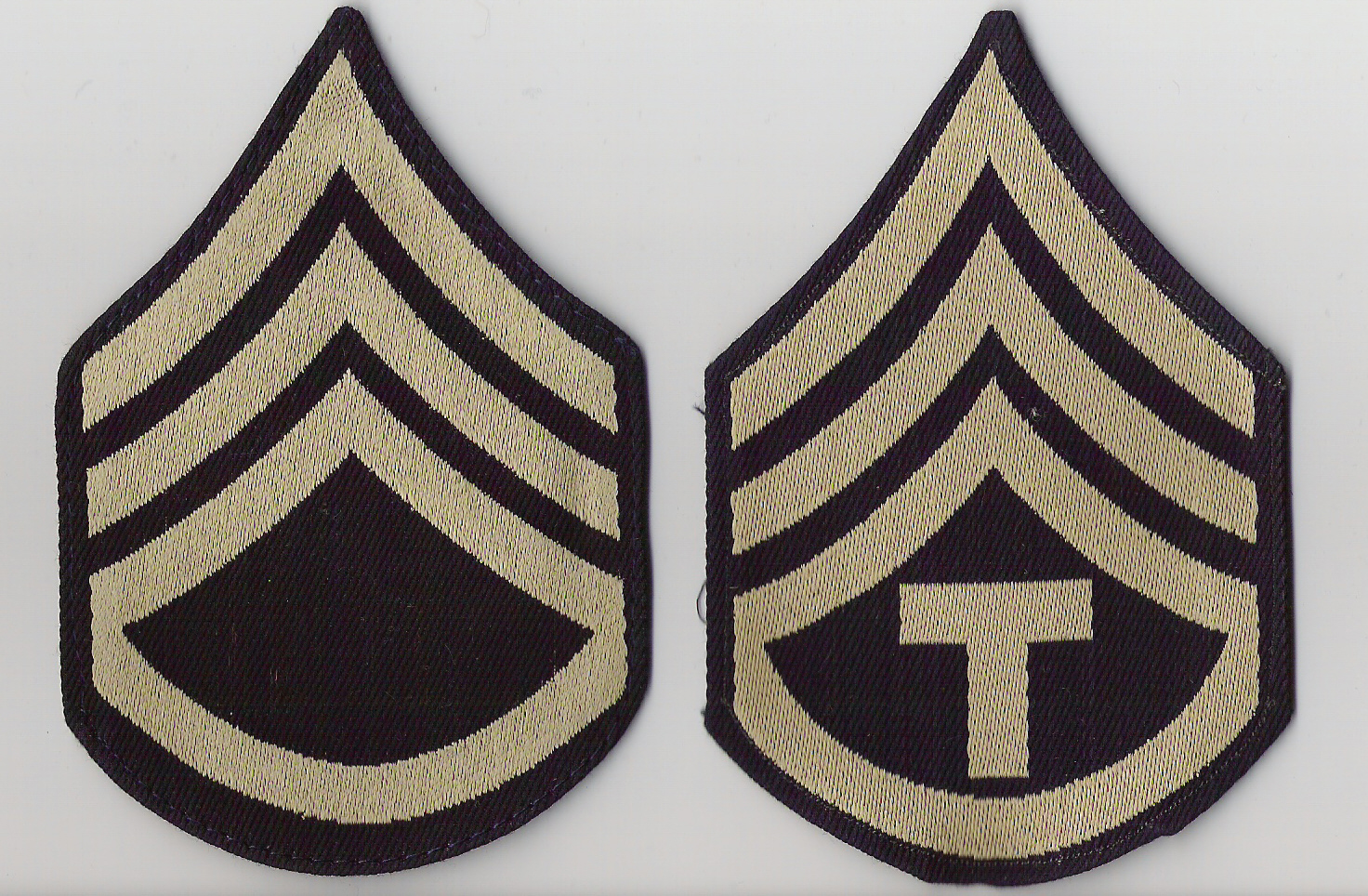
Left: Staff Sergeant (S/Sgt.) Right: Technician 3rd Grade (T/3)
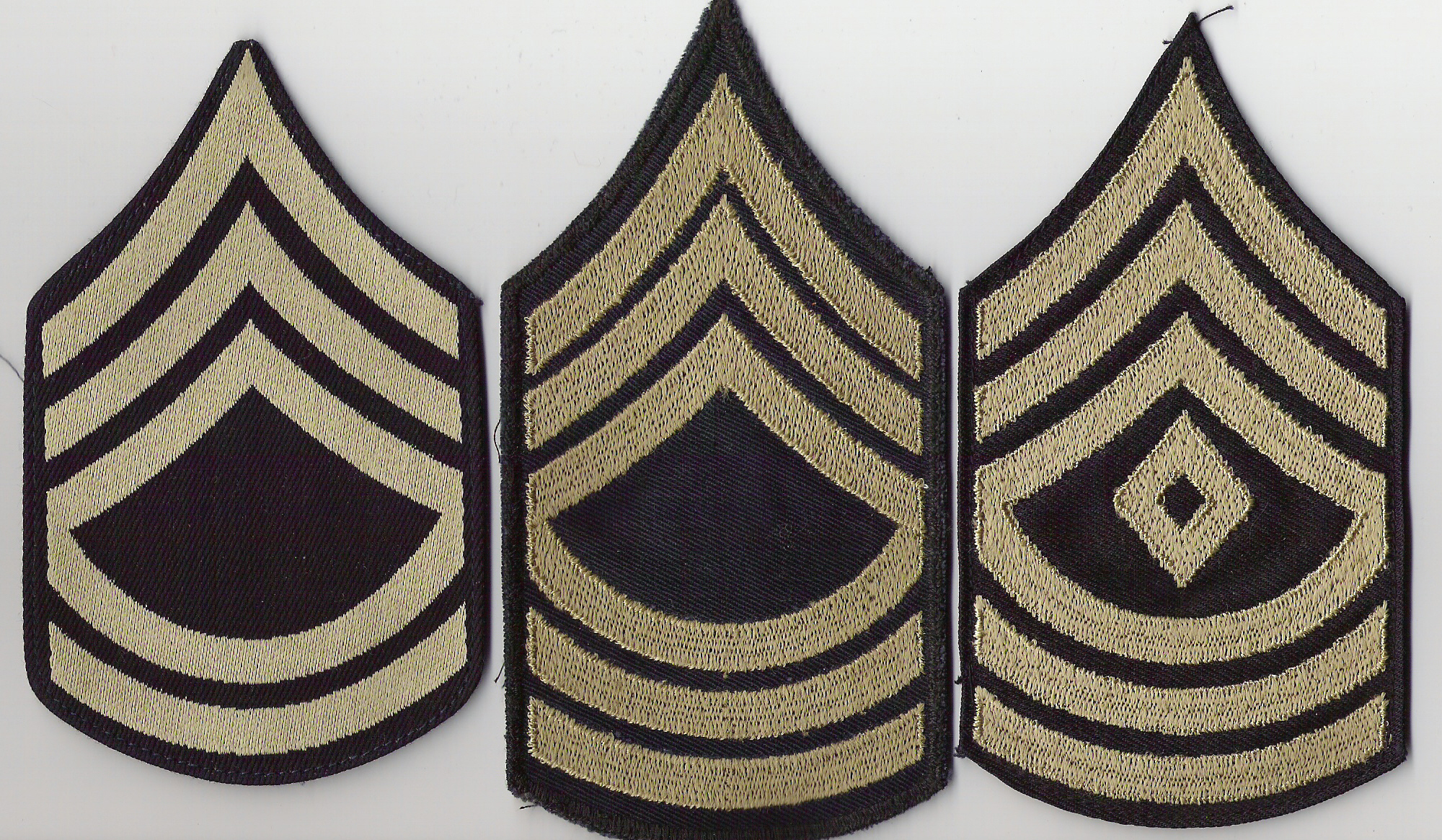
Left to right: Technical Sergeant (T/Sgt.), Master Sergeant (M/Sgt.), and First Sergeant (1st Sgt.)

Left to right: Summer Dress Corporal stripes, Winter Dress Corporal stripes, Winter Combat Corporal stripes.
There are four types of stripes that were used in World War II. Numerous variations can be found within each type: different background materials, different colors/shades of thread and material, and different weaves or embroidery. There are also numerous examples of locally manufactured or private purchase insignia. The types shown here are the most common types.
"Summer Combat": These are by far the most common variety. They are the light silvery-tan or gold-tan stripes on a dark blue (almost black) cotton background. These were to be worn on summer-style field or combat uniforms. M-41 field jackets, wool shirts (when worn as a field shirt as opposed to a dress shirt), and HBT shirts. They can also be seen worn on the khaki cotton shirt in tropical areas. These were originally embroidered, but as the war progressed were more often found in the woven "bevo" style.
"Summer Dress": These are an uncommon variety, as they were unauthorized and more limited in their use. These are the light to medium green, olive, or gold/tan colored stripes embroidered on a light khaki cotton background. These are often mistaken for Marine Corps stripes. These were generally only worn on the khaki cotton shirts when they were worn as a dress shirt . They could also be worn on the enlisted Khaki Tan Summer Dress jacket (not a normal issue item), and oddly enough, can sometimes be seen worn on the M-1942 paratroopers uniform. These were also originally embroidered, but can be found in the woven style. This variety was never specifically authorized for wear, but nevertheless saw widespread use.
"Winter Combat": These are the hard to find stripes that everyone wants. They are the thick dark OD wool felt stripes that are sewn onto a thick blue (almost black) wool felt background. These were supposed to be worn on any winter field or combat uniform such as tankers jackets, mackinaws, "horse blanket" wool overcoats (when worn as a field overcoat, NOT a dress overcoat), "Ike" jackets, etc.
"Winter Dress": These are the nice looking embroidered medium OD green stripes on a dark blue (almost black) background. Some early-war or pre-war versions have a more brown or gold color stripe. These were designed to be worn on the four-pocket dress tunic, and the wool shirt and the wool overcoat when they were worn as a dress uniform.
All of the above were pre-war or early war recommendations/regulations. Once the war got underway, a lot of these distinctions were ignored, and stripes were often worn as they became available. By far, the most commonly seen stripes on all uniforms are the so-called "Summer Combat" woven type stripes.
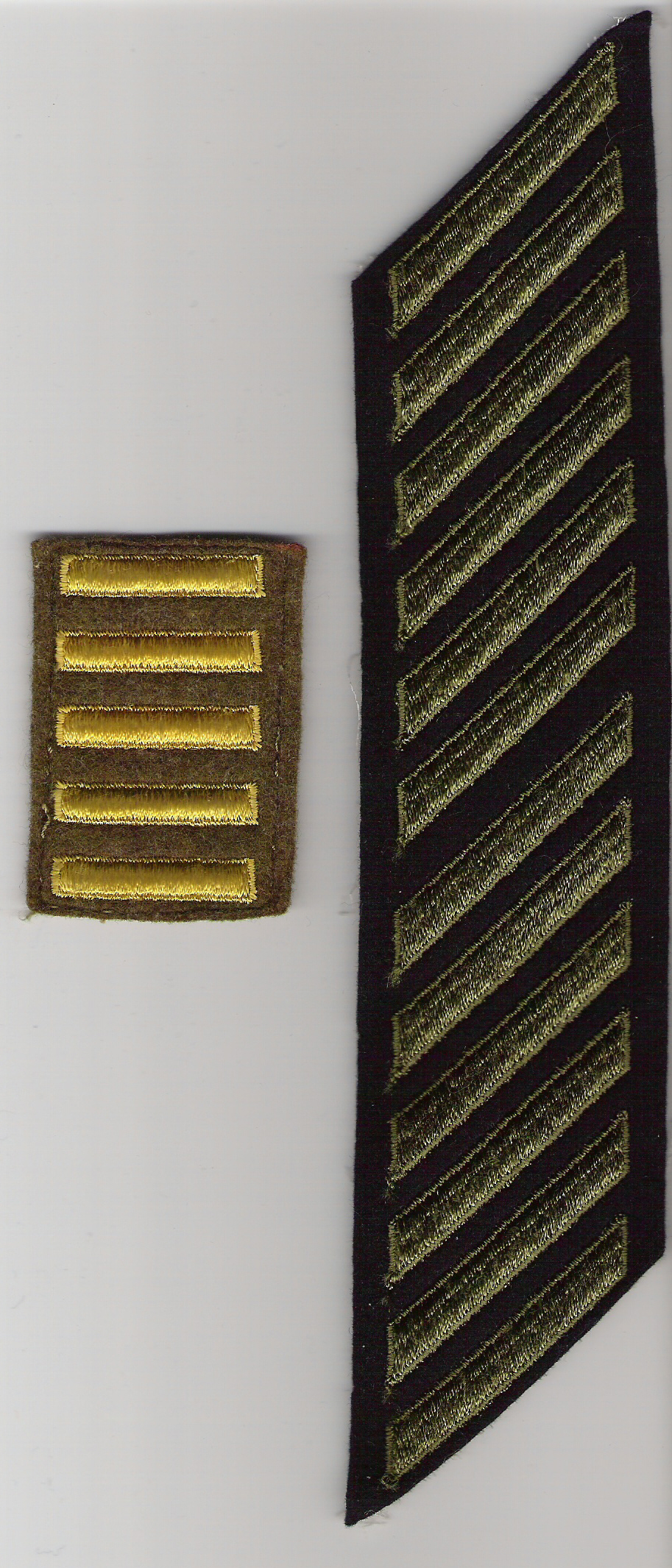
"Hashmarks"
Left: Overseas Service Stripes. One stripe was awarded for every six months' service overseas. The set shown would represent 30 months, or two and a half years overseas. The overseas bars were worn on the left sleeve above any service stripes for enlisted men, and with the bottom-most stripe four inches above the cuff for officers or enlisted men who did not rate any service stripes. The examples shown are gold embroidered on wool, but can be found in many variations of style, color and material.
Right: Service Stripes: One stripe was awarded for every three years of satisfactory service. The example shown would represent 36 years of service which would be highly unusual. These stripes were manufactured in long strips, and delivered in large rolls. The stripes were simply unrolled, and the desired number of stripes cut off the roll. These are usually found in the medium green on dark blue as shown, but can be found in many other colors, styles, and background materials. These were worn by enlisted men only, on the left sleeve of the dress uniform. They were worn angled as shown, and the tip of the bottom stripe should be four inches above the cuff of the jacket.
Special thanks to Rich M. for sharing his knowledge and enthusiam on this topic.